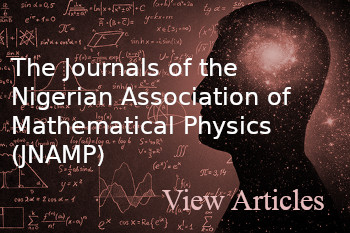ANALYSIS OF AN ISOTROPIC HOMOGENEOUS ELASTIC MATERIAL CONTAINING A FINITE INHOMOGENEITY AT THE END OF A CRACK UNDER ANTIPLANE SHEAR.
DOI:
https://doi.org/10.60787/tnamp.v20.382Keywords:
Crack, Inhomogeneity, Stress and displacement fields, AntiplaneAbstract
In this paper, we consider the determination of the mode III stress intensity factor (SIF) at the tips of a finite line inhomogeneity (anti-crack) of length units lying on the right-hand side of the -axis in an infinite elastic material with loads and applied on the surface of the crack at lengths and respectively from the origin. The inhomogeneity is rigidly bonded and so is displacement free. The loading gives rise to two-dimensional boundary value problem for a Laplace equation that models the antiplane strain displacement . The problem is solved by Mellin integral transform and Wiener-Hopf technique. The displacement and stress fields were obtained leading to the stress intensity factors and for the deformation at the outer inhomogeneity tip and at its inner tip respectively. The existence of the stress intensity factors implies that crack initiation can start either at the outer or inner tip depending on the loading. A linear relationship is found between and where is the normal stress intensity factor formed by the ratio of to the known mode III stress intensity factor at the tip of a crack in a material of the same geometry as the one being investigated. A similar relationship is found also for as shown in the graph.
Downloads
References
Y.T. Chou and Z.Y.Wang . In Recent Development in Applied Mathematics, Rensselaer Press. (1983):21-30
[ 2] Z.Y. Wang, H.T. Zhang, and Y.T. Chou. Journal of Applied Mechanics. 55(1985) 818-822
J.Xian , Y. Xu , M.Wang and F. Zhang. Study on the interaction of tip fields between periodic cracks and periodic rigid line inclusions. Acta Mechanica. 35(1) (2014):95-100
Z.M. Xiao , Y. Dai, B.J. Chen. Micro-Crack initiation at tip of a rigid line inhomogeneity in piezoelectric materials. International Journal of Engineering science, (41) (2003):137-147
[ 5] R.Ballarini. An integral approach for rigid line inhomogeneity problems. International Journal Fracture,33(1987):23-26
P.Pengyu, G. Yang and Longitudinal fields due to a rigid line inhomogeneity in a nonhomogeneous cylinder. Journal of the Nigerian association of Mathematical Physics,(14) (2009):34-45
N.G.Emenogu. A line inhomogeneity in elastic half plane under antiplane under shearing loading. IOSR Journal Mathematics, 9(6) (2014):07-15
M.R. Spiegel. Theory and problems of complex variables. McGraw Hill Book Co. Inc., New York, 3rd ed. (1981)
S.R. Choi and Y.Y. Earmme .Analysis of a kinked crack in antiplane shear. Mechanics of Materials 9(1990):195-204
H.Tada, P. Paris and G. Irwin . The stress analysis of cracks handbook. Del research Corp. Hellertown. (2000)

Downloads
Published
Issue
Section
License
Copyright (c) 2024 The Transactions of the Nigerian Association of Mathematical Physics

This work is licensed under a Creative Commons Attribution-NonCommercial 4.0 International License.




